- RTC Top
- What is RTC Modules?
- Epson's RTC Modules
- Features
- Scenes
- RTC Modules for Automotive
- Development Tools
- Videos
RA8000CE (RTC Module)
for Automotive, Wide operating temperature range, High stability
The RA8000CE is a RTC module with integrated 32.768 kHz digital temperature compensated crystal oscillator (DTCXO). It includes various functions such as a second-to-year clock/calendar with a leap-year correction, time alarm, wakeup timer, time update interrupts, clock output, and a time stamp function that can record two times and dates when an external or internal event occurs, and the power supply statuses that have been detected by the self-monitoring function. This product is compliant with AEC-Q100 and low-power operation, thus it is suitable for automotive applications.
Solutions for Improving Time Accuracy and Lowering System Power for Automotive Application
Overview
- Built in frequency adjusted
32.768 kHz crystal unit
Wide temperature operation -40°C to +125°C - Interface Type I2C-Bus interface
- Low backup current 300 nA Typ. / 3 V
- Time stamp function 2 time stamps Max.
- Time update interruption Hourly, minutely, and secondly
- Alarm interruption in Day, date,
hour, minute, second - Auto repeat wakeup timer interruption
- Self-monitoring interruption Crystal oscillation stop. VDD low.
- AEC-Q100 compliant
- Links to convenient toolsClick here
- Links to Video contentsClick here
![]()
![]()
![]()
![]()
RA8000CE
Design Support Data Download
Block diagram
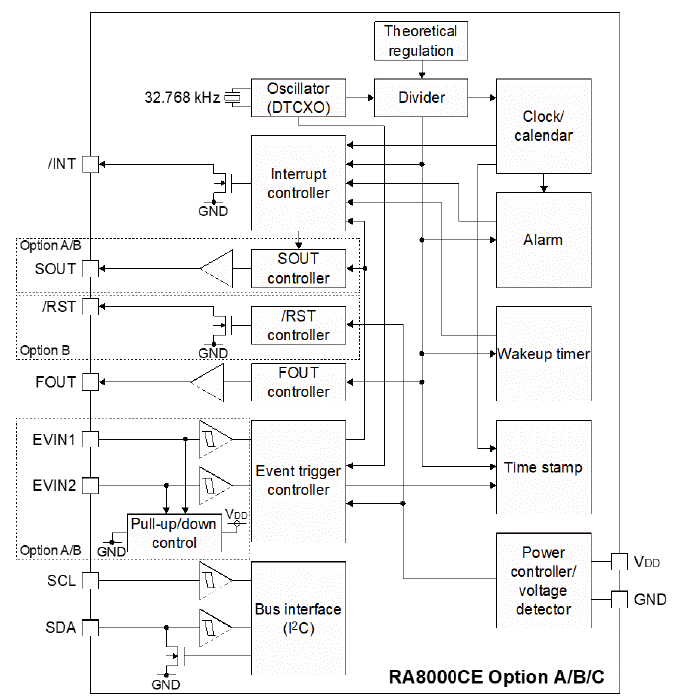
Specifications (characteristics)
Refer to application manual for details
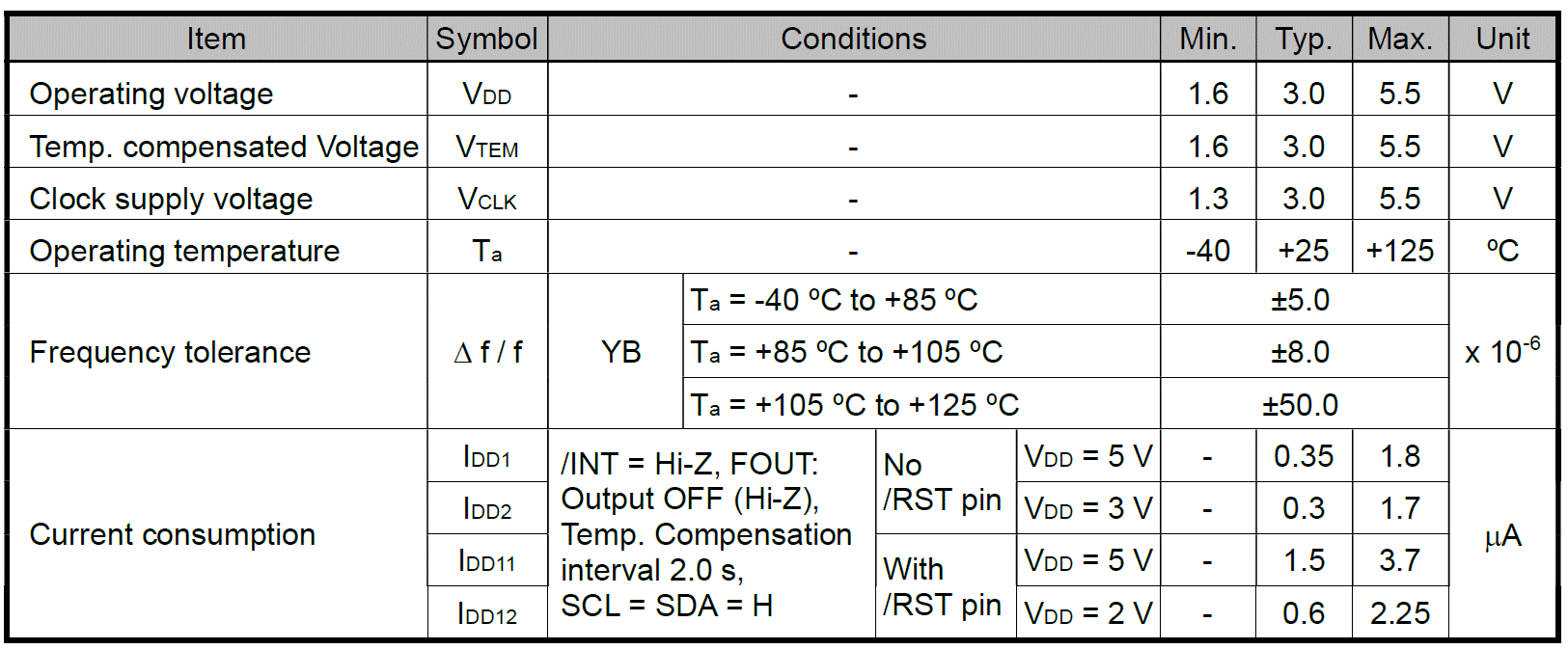
Product name and number
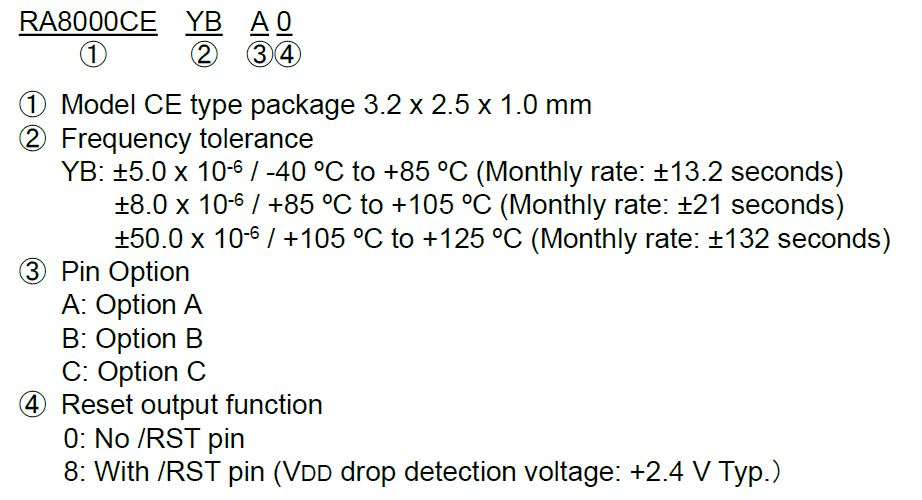

Pin function
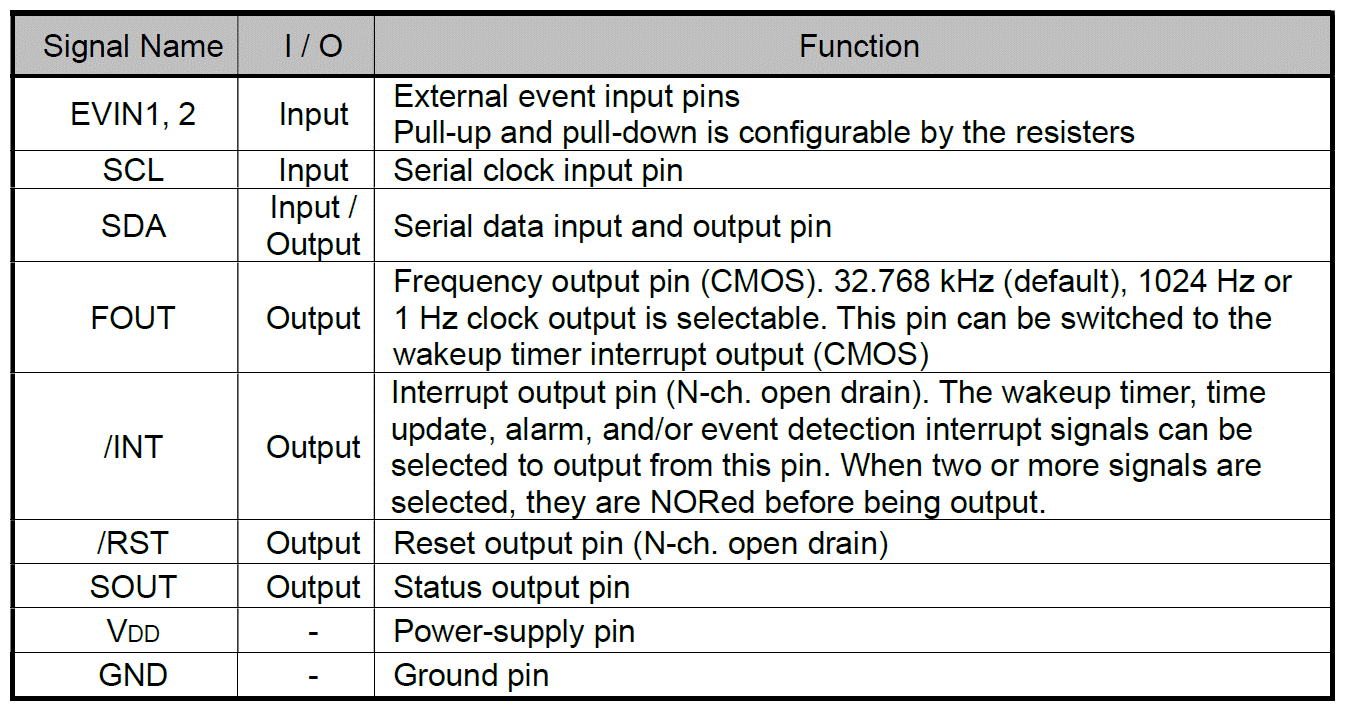
Terminal connection/External dimensions
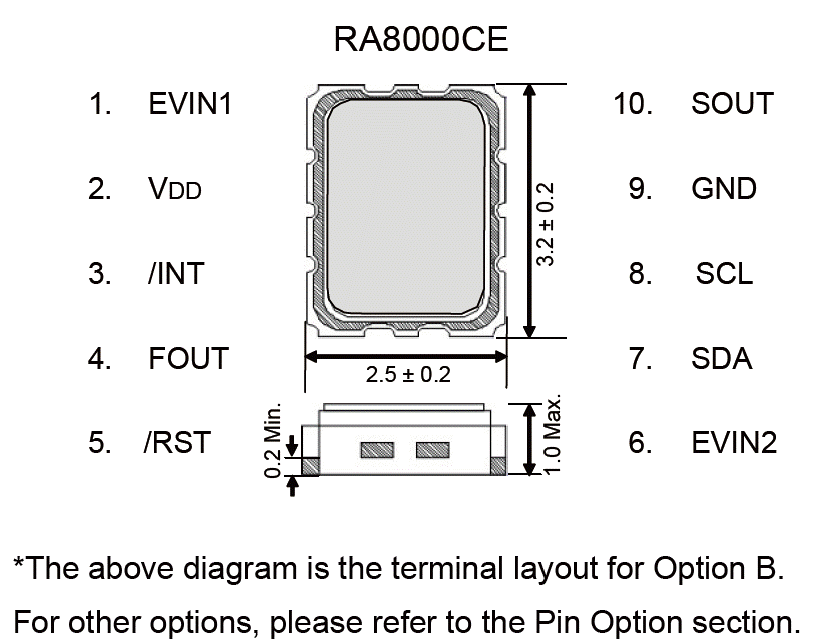
(Unit: mm)
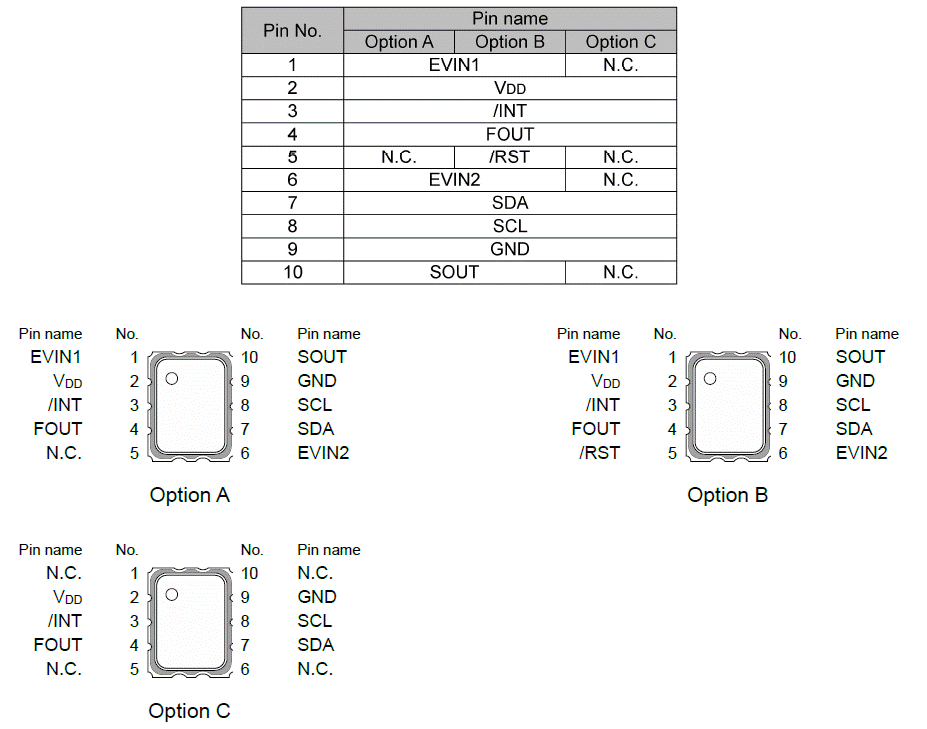
Footprint (Recommended)
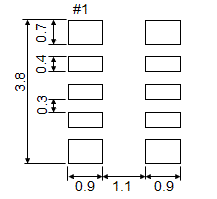
(Unit: mm)
To maintain stable operation, provide a 0.1uF by-pass capacitor
at a location as near as possible to the power source terminal of the crystal product (between Vcc - GND)
Links
Video contents: Feature of RA8000CE / RA4000CE
White paper: Benefits of RTC Module in an Automotive Battery Management System
White paper: kHz-band DTCXO timekeeping accuracy in a temperature changing environment
